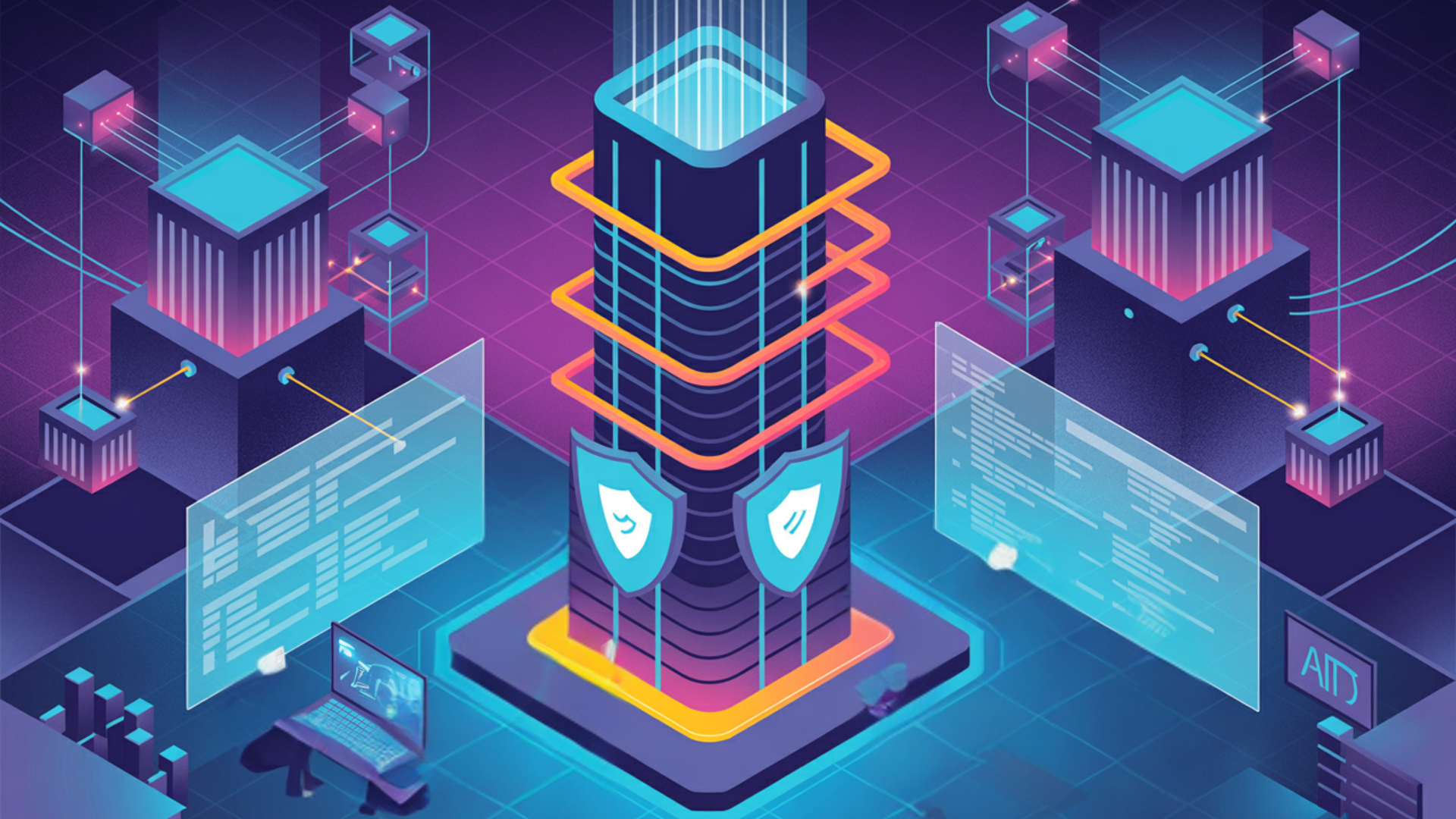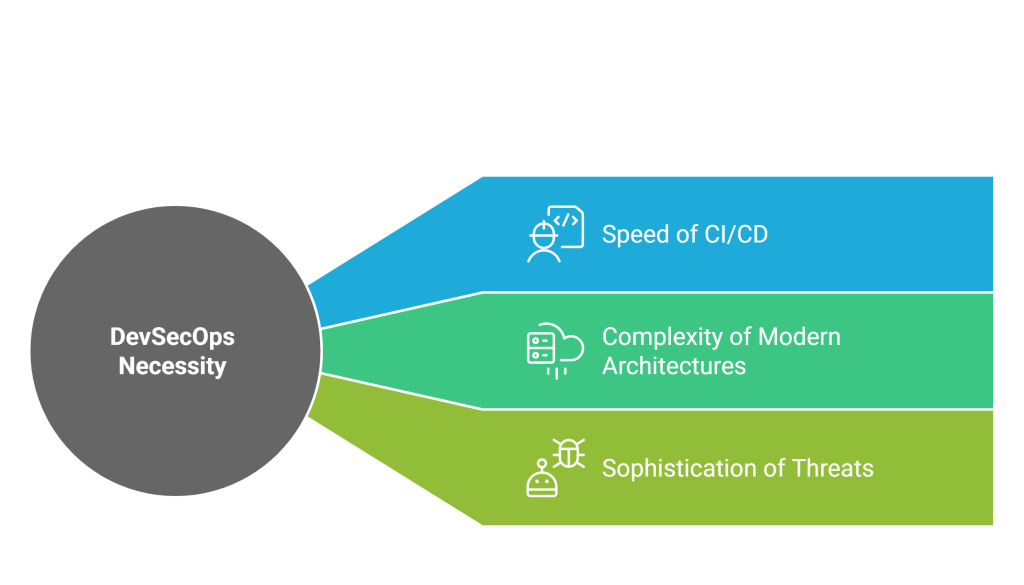
In the relentless race to innovate, businesses in 2025 are developing and deploying software faster than ever before. However, this speed often creates a dangerous gap where security is left behind, treated as an afterthought or a final hurdle to clear. This is where DevSecOps emerges not just as a methodology, but as a vital business philosophy. It fundamentally reshapes how we build software by integrating security into every single stage of the development lifecycle, ensuring that speed and safety are no longer competing priorities, but powerful allies.
The DevSecOps Revolution
What is DevSecOps, Really?
At its heart, DevSecOps is a cultural shift that breaks down the traditional silos between development, security, and operations teams. Think of it like building a skyscraper. The old way was to construct the entire building and then call in security experts to install locks and cameras. The DevSecOps approach is to architect security into the very foundation, embedding reinforced materials, fire suppression systems, and access controls into the blueprints from day one.
Instead of security being a gatekeeper that slows things down, it becomes a shared responsibility. Developers, security analysts, and IT operations staff collaborate from the beginning, using automated tools and shared processes to ensure that every line of code, every configuration, and every deployment is inherently secure. It’s about making security a seamless and continuous part of the workflow, not a bottleneck at the end.
Why DevSecOps Matters More Than Ever in 2025
The need for a new security model is driven by the modern reality of software development. Three major forces make DevSecOps an absolute necessity today:

- The Speed of CI/CD: With Continuous Integration and Continuous Delivery (CI/CD) pipelines, teams are deploying code multiple times a day. A traditional, manual security review process simply cannot keep up and becomes an instant roadblock to innovation.
- The Complexity of Modern Architectures: Today’s applications are built on microservices, containers, and cloud infrastructure. This creates a vast and constantly changing attack surface that is impossible to secure with old-fashioned, perimeter-based methods.
- The Sophistication of Threats: Cyber threats are more automated, intelligent, and relentless than ever. Attackers exploit vulnerabilities within minutes of their discovery, meaning security must be proactive and deeply integrated, not reactive.
The Core Pillars of a Successful DevSecOps Practice
Implementing DevSecOps is not about buying a single tool; it’s about embracing a set of core principles that guide your technology, processes, and culture.
Pillar 1: Shifting Security Left
“Shifting left” is the practice of moving security checks as early as possible in the development lifecycle. Instead of finding a vulnerability just before release, you find it when a developer is writing the code. This is exponentially cheaper and faster to fix. It involves providing developers with tools that scan their code in real-time within their development environment (IDE), giving them instant feedback on potential security flaws.
Pillar 2: Automation as the Engine
Automation is the engine that powers DevSecOps. Manual security reviews are slow, inconsistent, and prone to error. By automating security, you can:
- Run Static Application Security Testing (SAST) to scan source code for vulnerabilities with every code commit.
- Perform Software Composition Analysis (SCA) to check for known vulnerabilities in open-source libraries.
- Conduct Dynamic Application Security Testing (DAST) on running applications in a test environment.
- Scan Infrastructure as Code (IaC) templates for misconfigurations before provisioning infrastructure.
Pillar 3: Continuous Monitoring and Feedback
Security doesn’t end once software is deployed. DevSecOps extends into the operations phase with continuous monitoring of production environments. This includes actively looking for threats, analyzing user activity, and ensuring that systems remain compliant. When an issue is detected, automated feedback loops alert the right teams instantly, enabling rapid response and remediation.
Pillar 4: Fostering a Security-First Culture
This is arguably the most important and challenging pillar. Technology and processes are only effective if the people behind them are aligned.
Culture: The True Foundation of DevSecOps
A successful DevSecOps culture is built on shared ownership and collaboration. It means developers think about security when they write code, operations teams consider security when they manage infrastructure, and security experts act as advisors and enablers, not gatekeepers. Key elements of this culture include:
- Shared Responsibility: Everyone is responsible for security, not just the “security team.”
- Blameless Post-Mortems: When an incident occurs, the focus is on learning and improving the system, not on blaming individuals.
- Continuous Learning: Providing ongoing training and resources to help all teams stay up-to-date on the latest security threats and best practices.
The Tangible Benefits: What DevSecOps Delivers
When implemented correctly, DevSecOps delivers powerful and measurable business outcomes:
| Benefit | Description |
|---|---|
| Release with Confidence | By embedding security checks throughout the pipeline, you significantly reduce the risk of deploying vulnerable code, leading to more resilient applications. |
| Accelerate Innovation | Automating security removes bottlenecks, allowing you to release new features to customers faster and stay ahead of the competition. |
| Slash Remediation Costs | Finding and fixing security flaws early in the development process is dramatically cheaper than patching them in a live production environment. |
| Enhance Collaboration | Breaking down silos between teams leads to better communication, faster problem-solving, and a more positive and productive work environment. |
| Simplify Compliance | Automated policy checks and detailed logging make it much easier to demonstrate compliance with regulations like GDPR, HIPAA, and PCI DSS. |
Getting Started: Your First Steps into DevSecOps
Adopting DevSecOps can feel daunting, but it’s a journey that can be started with small, impactful steps:
- Start with One Project: Choose a single, non-critical project to pilot your DevSecOps practices. This allows you to experiment, learn, and demonstrate value without risking the entire organization.
- Automate One Security Test: Begin by integrating one automated security check into your existing CI/CD pipeline, such as a dependency scanner (SCA). It’s a high-value, low-effort starting point.
- Educate and Empower Your Teams: Invest in secure coding training for your developers. Give them the knowledge and tools they need to become your first line of defense.
- Measure and Communicate Success: Track metrics like the number of vulnerabilities found early and the time saved from manual reviews. Share these wins to build momentum and get buy-in for wider adoption.
Conclusion
DevSecOps is more than just a buzzword; it is the modern standard for building and delivering software securely and at scale. By weaving security into the very fabric of your development process, you transform it from a barrier into a strategic advantage. It empowers your teams to innovate boldly, knowing that safety and resilience are built-in from the start. In the dynamic digital landscape of 2025, embracing the DevSecOps revolution is the definitive way to build a future that is both innovative and secure.
FAQs
What is the main difference between DevOps and DevSecOps?
The main difference is the intentional integration of security. While DevOps focuses on uniting development and operations to speed up delivery, DevSecOps explicitly adds security into that equation, making it a shared responsibility from the very beginning of the lifecycle. Think of it as DevOps with a “security-first” mindset.
Is DevSecOps only for large enterprise companies?
Not at all. While large enterprises benefit greatly from the scale and consistency DevSecOps provides, startups and small businesses can also gain a significant competitive advantage. By building a secure foundation early, smaller companies can avoid costly security debt, build trust with customers, and ensure their products are resilient as they grow.
Do we need to buy a lot of new tools to implement DevSecOps?
Not necessarily, especially at the beginning. Many existing CI/CD platforms have built-in security features or integrations with popular open-source security tools. The initial focus should be on changing the culture and processes. You can start by integrating simple, automated security checks into your current workflow and gradually add more sophisticated tools as your practice matures.

